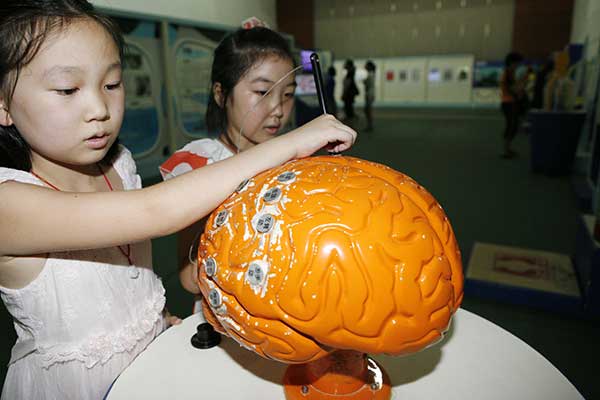Study shows different brain cells process positive, negative experiences
 |
|
[Photo by Gong Bo/Asianewsphoto] |
Researchers at Stanford University have combined two research techniques to show how prefrontal brain cells, built specifically to process positive and negative experiences, are distinctly and fundamentally different.
The researchers, led by Karl Deisseroth, a professor of bioengineering and of psychiatry and behavioral sciences, reported their findings in a paper published online Thursday in Cell.
The prefrontal cortex, which plays a mysterious yet central role in the mammalian brain, has been linked to mood regulation, and different cells in the prefrontal cortex seem to respond to positive and negative experiences. How it governs these opposing processes of reward or aversion, however, has been largely unknown.
In the new study, the researchers combine, for the first time, two cutting-edge research techniques, known as optogenetics and CLARITY, developed by Deisseroth.
The first facet of the research involved CLARITY, a remarkable feat of chemical engineering in which the fatty, opaque tissues that constitute an intact, non-living brain are removed, leaving behind a transparent physical structure with all of its parts and wiring exactly in place.
It allowed the researchers to trace specific pathways and "label" specific molecular structures within the brains of the subjects, which in this case were mice. They gave the mice positive or negative stimuli. Only the neurons that had been strongly active during the experience became labeled - along with their outgoing connections - allowing effective tracing of the distinct circuits through the brain.
- Doctors Unveil Potential New Tool to Fight Brain Cancer
- Blend of philosophy and brain science
- Macao issues brain death standards to regulate organ transplantation
- A day of reckoning for fingers and brain
- Exec acknowledges link between football and brain disease
- New chips will make AlphaGo's brain obsolete
















